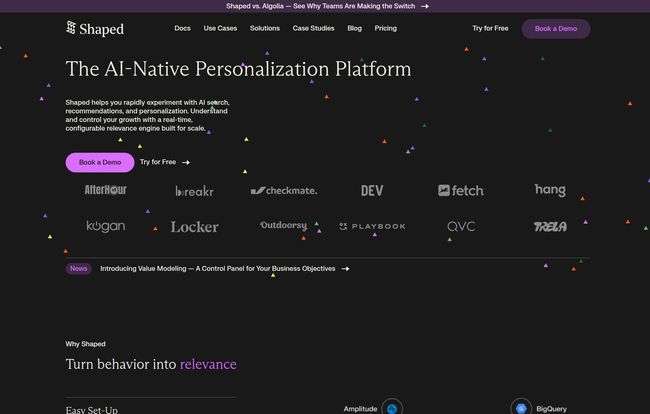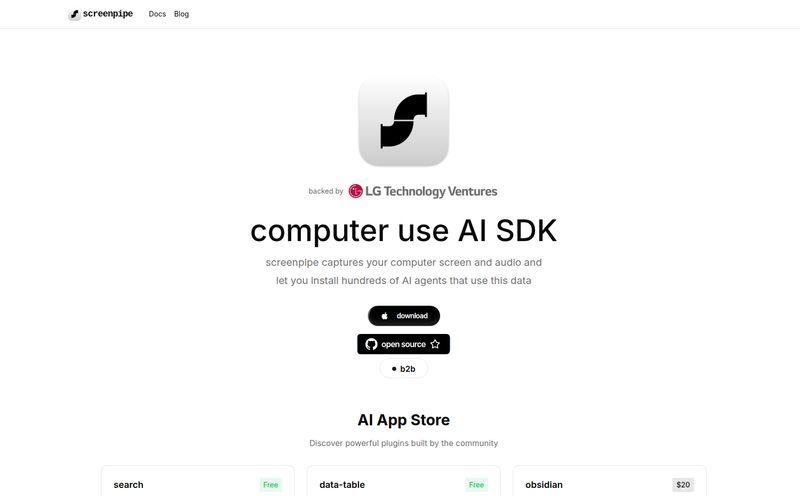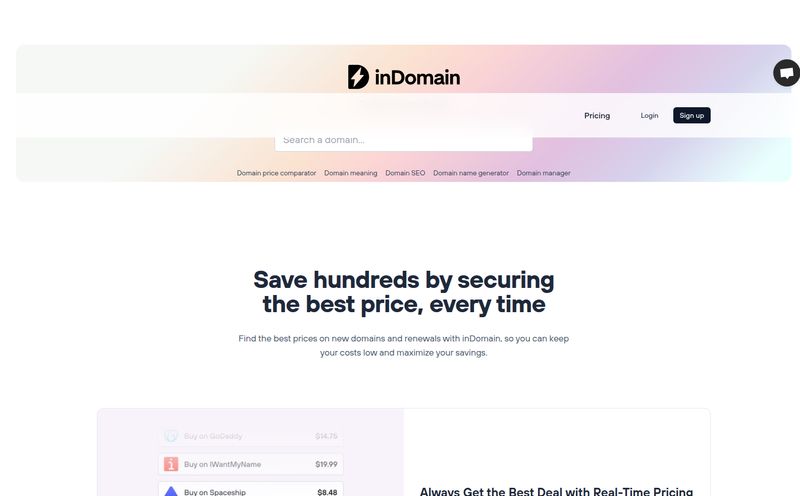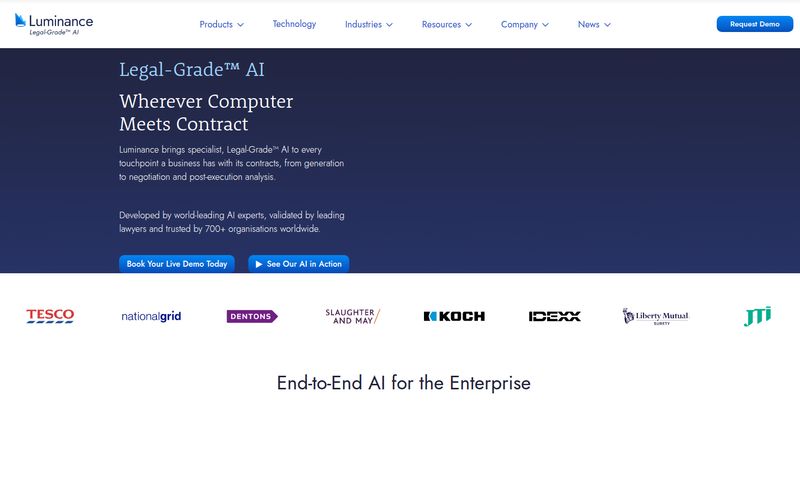We've all been there. You buy a single coffee maker, and for the next six months, every website you visit thinks you're trying to open a Starbucks franchise. The recommendations are relentless, irrelevant, and honestly, a little insulting to your intelligence. For years, as an SEO and traffic guy, I've watched companies struggle with this. They bolt on some generic recommendation widget and call it “personalization.” It’s not.
It’s a pattern matcher at best. A clumsy one at that.
So when I stumble across a platform that claims to be “AI-native” and built from the ground up to turn user behavior into genuine relevance, my curiosity gets the better of me. That platform is Shaped, and I’ve spent the last few days digging into what they're all about. This isn’t just another plug-and-play widget. It feels different. It feels like it might actually be the tool serious teams have been waiting for.
So, What Exactly is Shaped? (And Why Should You Care?)
At its heart, Shaped is an AI personalization platform. But that's a bit like calling a Formula 1 car just a 'vehicle'. The key difference is in the approach. Instead of just offering a pre-baked recommendation engine, Shaped gives you the tools to build your own powerful ranking models. Think of it less like a microwave meal and more like a professional chef's kitchen. You get the best ingredients (state-of-the-art AI models) and the best tools (a flexible API and SDK), allowing you to create something perfectly suited to your audience's taste.
This is about understanding what a user is most likely to engage with, buy, or click on next. And that understanding can be used everywhere: personalized homepages, discovery feeds, in-app recommendations, search results, even marketing emails that don't suck. The platform is designed to unify your search and recommendation systems, which has been a long-standing headache for so many tech teams I've worked with. Why should your search bar and your 'recommended for you' section operate on two different brains? It makes no sense.
Shaped seems to agree.
The Features That Actually Matter
I’ve seen a million feature lists in my time. Most are just buzzword salads. But looking through Shaped’s offerings, a few things really stand out as genuinely impactful for teams that want to do this stuff right.
The "AI-Native" Core: More Than Just Hype
This is the big one. Shaped proudly states its built on an AI-native foundation, using transformer models. For those not deep in the ML world, this is the same kind of architecture that powers things like ChatGPT. It's a huge leap beyond the older, more rigid models that most recommendation systems use. It allows for a much deeper understanding of context and sequence. It also means the system can adapt in real-time. When a user clicks on something, that signal is immediately used to refine their experience. It’s a living, breathing system, not a static report that runs once a night.
This also helps tackle the dreaded “cold-start problem” – what do you show a brand new user? With a more sophisticated understanding of content and nascent user signals, Shaped can make much more intelligent guesses right from the get-go.

Visit Shaped
Built for People Who Build Things (Hello, Engineers!)
One of my biggest pet peeves with SaaS tools is the black box. You feed data in, something happens, and a result comes out, but you have no control or visibility. Shaped is the opposite. They call it a “glass box.” It’s designed specifically for ML engineers and data scientists. The inclusion of a Python code snippet right on their homepage says it all. You have full control to customize, extend, and fine-tune the ranking and retrieval components.
It integrates directly with the data sources you're already using—think Segment, BigQuery, Snowflake, Amplitude, and more. This isn't about ripping out your existing data stack. It's about plugging a high-performance brain directly into it. For an engineering team, that means less time spent on data plumbing and more time on building what matters.
Rapid Experimentation: A Growth Marketer's Dream
Here’s where the tech meets the business goals. Because you can easily define and test new ranking strategies, you can finally run meaningful experiments. What happens if we prioritize new content for returning users? What if we boost items with higher margins in recommendations? You can test these hypotheses quickly and see the impact on your actual business metrics. And the case studies they feature show some pretty bonkers results: a 4x increase in redemption rates and a 16% lift in average order value. Those aren't just vanity metrics; that's real money.
Who is Shaped Actually For?
This isn't a tool for a blogger to add a "related posts" widget to their Wordpress site. Let's be clear about that. Shaped is aimed at more sophisticated tech environments that see personalization as a core part of their product. I see it being a perfect fit for:
- E-Commerce & Marketplaces: To create truly dynamic shopping experiences that go way beyond "customers also bought." Think about boosting discovery, surfacing unique sellers, and increasing basket size.
- Media Platforms: To fight content fatigue. For a streaming service or news site, keeping the feed fresh and genuinely interesting is the key to retention.
- Social Media: The entire game in social media is the feed. A platform like Shaped could be the engine that powers a more engaging and less repetitive user experience.
Let's Talk Turkey: The Shaped Pricing Model
Alright, the part everyone scrolls down for. The pricing. Shaped follows a model common in B2B SaaS where they don't list prices publicly. You have to contact them for a quote. I know, I know, it can be frustrating. But in my experience, for a platform this powerful, it often makes sense. Your costs are based on your usage, so you're not paying a huge flat fee for capacity you don't need.
They offer three main tiers:
- Free Trial: A 7-day, full-feature trial. This is great. It means you can actually kick the tires and see if it works with your data before committing.
- Starter: This plan is aimed at starter and growth teams. You get the full platform, real-time APIs, and email/Slack support. You have to request pricing, but its a good starting point for teams getting serious.
- Growth: This is the 'white-glove' tier. It includes everything in Starter plus a dedicated solutions engineering team, a dedicated product team, and priority 24/7 support. This is for scaled companies where personalization is mission-critical.
The bottom line is you'll need to have a conversation with them. Don't let that scare you off if the platform feels like the right technical fit.
My Honest Take: The Good and The Could-Be-Better
No tool is perfect, right? After my analysis, here's my unfiltered opinion. The biggest pro is the entire philosophy of the platform. The unified, AI-native, engineer-first approach is incredibly refreshing. It's a tool built for the modern data stack and for teams that are tired of being constrained by black-box solutions. The focus on real-time adaptation and rapid experimentation is exactly what's needed to move the needle on engagement and revenue.
On the other side of the coin, the lack of transparent pricing will be a hurdle for some. Smaller teams or those in the early stages of budgeting might find it difficult to evaluate without a number. And while being "designed for ML engineers" is a massive strength, it also implies a certain technical barrier to entry. Your marketing manager probably isn't going to be the one implementing this. You need the engineering resources to truly make it sing. But then again, that's kind of the whole point.
Frequently Asked Questions about Shaped
- How hard is it to integrate Shaped?
- Based on their documentation and direct integrations with sources like Segment, Snowflake, and BigQuery, the initial data connection seems straightforward for a technical team. They claim you can be up and running with a model in minutes, with the real work being in the continuous tuning and experimentation.
- How is Shaped different from AWS Personalize or Algolia?
- While they play in a similar space, the focus is different. Tools like AWS Personalize can sometimes feel more like a black box. Algolia is a powerhouse in search. Shaped's main differentiator seems to be its unified approach to both search and recommendations, all built on a more modern, flexible AI core that's designed to be a 'glass box' for engineers.
- Is Shaped just for big companies?
- Not necessarily. The 'Starter' plan is specifically designed for smaller and growth-stage teams. The 'Growth' plan with its white-glove support is definitely geared toward larger enterprises, but it seems they've made an effort to be accessible to companies that are ready to get serious about personalization, regardless of size.
- What kind of data do I need to use Shaped?
- You'll need two main types of data: behavioral data (what your users are clicking, viewing, buying, etc.) and item/content data (metadata about your products, articles, videos, etc.). The more quality data you have, the better your ranking models will perform.
- What does "AI-native" really mean here?
- It means the platform was built from the ground up using modern AI architectures like transformer models, rather than adding AI features on top of an older system. This leads to better performance, real-time adaptability, and a deeper contextual understanding of user behavior and content.
Final Thoughts: Is This The Future of Personalization?
So, is Shaped the magic bullet for all your personalization woes? No, because magic bullets don't exist. But is it a massive step in the right direction? Absolutely. For too long, personalization has been a vague marketing promise. Shaped reframes it as what it should be: a rigorous engineering discipline.
It's not a tool for everyone. It's a tool for ambitious teams who understand that creating a truly relevant user experience is a competitive advantage. It’s for the builders, the experimenters, and the ones who want to stop showing people coffee makers for six months. If that sounds like your team, then I think you owe it to yourself to check out their 7-day trial. The era of generic recommendations is over. The era of intelligent ranking is here.
Reference and Sources
- Shaped Official Website
- AWS Personalize - For comparison of a major cloud provider's offering.
- Algolia - For comparison of a leader in AI search.



